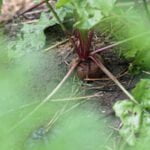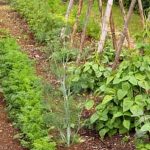Are you looking to enhance your vegetable garden with the beauty and functionality of flowers? Planting flowers alongside your vegetables can bring a myriad of benefits, from attracting pollinators to providing natural pest control.
Companion planting, the practice of growing different plants together for mutual benefit, has gained popularity among gardeners for its ability to create healthier and more productive gardens. In this article, we will delve into the concept of planting flowers in vegetable gardens and explore the various advantages of companion planting.
By incorporating compatible flowers into your vegetable garden, you can create a thriving ecosystem that supports the growth and well-being of both plants. From controlling pests and improving soil health to enhancing pollination, flowers play an essential role in contributing to the overall success of vegetable gardens. Selecting the right combination of flowers can result in improved yields, healthier plants, and a more visually appealing garden.
When it comes to choosing flowers for your vegetable garden, it is important to consider factors such as compatibility with specific vegetables, their ability to attract beneficial insects, and their impact on soil conditions. By exploring different types of flowers and their unique attributes, you can gain a better understanding of how they can complement and support the growth of your vegetables.
In the following sections, we will discuss the different types of flowers that are compatible with vegetable gardens and provide insights into popular flower choices for successful companion planting.
Benefits of Flowers in Vegetable Gardens
Planting flowers in vegetable gardens can offer numerous benefits, making it a wise and practical gardening decision. One of the most significant advantages is pest control. Certain flowers, such as marigolds and nasturtiums, release compounds that repel harmful insects like aphids, beetles, and nematodes. By inter-planting these flowers with vegetables, gardeners can naturally protect their crops from destructive pests without the need for chemical pesticides.
In addition to pest control, flowers also play a crucial role in pollination. Bees, butterflies, and other pollinators are attracted to the vibrant colors and sweet nectar of many flowers. Encouraging these beneficial insects to visit the garden helps ensure thorough pollination of vegetable crops, leading to better fruit set and higher yields. Furthermore, some flowering plants have deep roots that can break up compacted soil and improve its structure, drainage, and fertility.
Choosing the Right Flowers
When selecting flowers for a vegetable garden, it is important to consider varieties that complement the vegetables being grown. For example, tall sunflowers can provide shade for heat-sensitive plants like lettuce or spinach during the summer months.
Similarly, aromatic herbs like lavender or chamomile not only attract pollinators but also deter pests while enhancing the flavors of nearby vegetables. Matching flowering plants with specific vegetables based on their growth habits and characteristics is key to maximizing their benefits within the garden.
Popular Flowers for Vegetable Gardens
Some popular choices among gardeners include zinnias, cosmos, calendula (pot marigold), and bee balm – all known for their compatibility with vegetable gardens. Zinnias attract bees and butterflies while adding a burst of color to the garden landscape; cosmos are easy-to-grow annuals that enhance overall garden health; calendula serves as a natural pesticide against nematodes; bee balm is loved by pollinators and hummingbirds alike.
These examples showcase how strategically planting compatible flowers can create a harmonious ecosystem within the vegetable garden.
Choosing the Right Flowers
When it comes to choosing the right flowers for your vegetable garden, it’s important to select varieties that not only look beautiful but also provide practical benefits for your crops. Companion planting flowers with vegetables can help improve the overall health and productivity of your garden. Some of the main attributes to consider when choosing flowers for your vegetable garden include their pest-repelling properties, ability to attract pollinators, and soil improvement capabilities.
Here are some types of flowers that are compatible with vegetable gardens, along with their key attributes and how they complement vegetables:
1. Marigolds (Tagetes spp.): These vibrant flowers are well-known for their ability to repel nematodes, aphids, and other harmful pests that can damage vegetable plants. Their bright blooms also attract beneficial insects such as ladybugs and hoverflies, which feed on common garden pests.
2. Nasturtiums (Tropaeolum majus): Nasturtiums not only add a pop of color to the garden but also act as a natural trap crop for aphids and whiteflies, diverting these pests away from your vegetables. Their edible leaves and flowers make them a versatile choice for both ornamental and culinary purposes.
3. Lavender (Lavandula angustifolia): This fragrant herb is beloved by bees and other pollinators, making it an excellent companion plant for vegetables that rely on pollination for fruit set, such as tomatoes and zucchinis. Additionally, lavender’s aromatic foliage can deter insect pests while attracting beneficial predatory insects like wasps.
By carefully selecting the right flowers for your vegetable garden based on their specific attributes and benefits, you can create a harmonious environment where plants work together to support each other’s growth and well-being.
Popular Flowers for Vegetable Gardens
When it comes to adding flowers to your vegetable garden, choosing the right ones can make a big difference in the overall health and productivity of your plants. Here are some popular flowers that are not only beautiful but also beneficial for your vegetable garden:
1. Marigolds: These vibrant, orange or yellow flowers are known for their ability to repel pests such as nematodes, whiteflies, and aphids. They also add color and beauty to the garden while improving the soil with their root secretions.
2. Nasturtiums: With their bright and colorful blooms, nasturtiums are great for attracting beneficial insects like ladybugs and hoverflies that help control pests in the garden. Their peppery leaves can also deter pests from attacking your vegetables.
3. Sunflowers: Tall and majestic, sunflowers not only add visual interest to your garden but also provide nectar for pollinators like bees and butterflies. Additionally, they can provide shade for heat-sensitive vegetables like lettuce or spinach.
4. Lavender: Known for its sweet fragrance and calming properties, lavender is a great addition to any vegetable garden. It attracts pollinators while deterring deer, rabbits, and other unwanted animals from snacking on your crops.
5. Borage: This easy-to-grow herb produces beautiful blue star-shaped flowers that attract bees and other pollinators to your garden. The edible flowers can also be used as a garnish or added to salads.
By incorporating these flowers into your vegetable garden, you can create a more balanced ecosystem that promotes healthy plant growth while adding beauty and color to your outdoor space. In addition to their pest-repelling and pollinator-attracting qualities, these flowers can provide numerous benefits for both you and your vegetables.
Planting and Maintenance
When it comes to planting and maintaining flowers in vegetable gardens, there are several key considerations to keep in mind. Proper spacing, soil preparation, and watering are crucial for the success of both the flowers and the vegetables in your garden.
Firstly, when planning the layout of your garden, it’s important to consider the spacing between the flowers and vegetables. Allow for enough space between plants to ensure good air circulation, which can help prevent diseases and pest infestations. Additionally, some flowers may have specific spacing requirements based on their mature size, so be sure to research the individual needs of each flower variety.
In terms of soil preparation, it’s essential to ensure that the soil is fertile and well-draining. Prior to planting, amend the soil with organic matter such as compost or well-rotted manure to improve its structure and nutrient content. This will provide a healthy growing environment for both flowers and vegetables alike.
Proper watering is also key to maintaining a successful flower and vegetable garden. Different flowers and vegetables may have varying water needs, so it’s important to water them accordingly. In general, aim to keep the soil consistently moist but not waterlogged. Mulching around plants can help retain moisture in the soil and reduce weed growth, contributing to overall garden health.
| Consideration | Key Points |
|---|---|
| Spacing | Ensure good air circulation; Research individual flower spacing requirements |
| Soil Preparation | Amend soil with organic matter; Ensure fertility and good drainage |
| Watering | Keep soil consistently moist; Mulch around plants |
By paying attention to these factors and providing proper care for both flowers compatable for vegetable gardens, you can create a vibrant and thriving garden that benefits both your eyes and your table.
Combinations to Avoid
When it comes to planting flowers in vegetable gardens, it’s essential to be mindful of the compatibility between different plants. While some flowers can bring numerous benefits to a vegetable garden, others may have adverse effects on the growth and development of vegetables. Understanding which flower and vegetable combinations to avoid is crucial in maintaining a healthy and thriving garden.
Aggressive Spreaders
Some flowers are known for their aggressive spreading tendencies, which can overcrowd and outcompete vegetables for nutrients, water, and sunlight. Plants such as mint, lemon balm, and certain types of daisies are notorious for their invasive nature. When planted in close proximity to vegetables, these aggressive spreaders can quickly take over the garden bed, leading to stunted growth or even death of the vegetables.
Heavy Feeders
Certain flowers have high nutrient requirements and can deplete the soil of essential elements needed for the healthy growth of vegetables. Sunflowers, dahlias, and delphiniums are examples of heavy feeders that absorb large amounts of nitrogen from the soil. When planted alongside vegetables, these flowers can disrupt the nutrient balance in the soil, resulting in reduced yields and overall plant health.
Allelopathic Plants
Some flowers produce natural chemicals that inhibit the growth of neighboring plants through a process known as allelopathy. For example, marigolds release compounds that can be detrimental to the growth of certain vegetables. While marigolds are often recommended for pest control in vegetable gardens when planted directly next to certain vegetables they may hinder their growth due to their allelopathic properties.
By being aware of these potential drawbacks and avoiding incompatible flower choices for your vegetable garden, you can ensure a harmonious and mutually beneficial environment where both flowers and vegetables thrive together.
Attracting Pollinators
In addition to providing a beautiful aesthetic, flowers play a crucial role in attracting beneficial insects and pollinators to vegetable gardens. By incorporating specific flowers into your garden, you can create a healthy ecosystem that supports the growth and productivity of your vegetables. One of the key benefits of attracting these insects is their role in pollination, which is essential for the production of many fruits and vegetables.
Certain flowers, such as marigolds, sunflowers, and sweet alyssum, are known for attracting bees, butterflies, and other pollinators. These insects aid in the pollination process by transferring pollen from one flower to another, resulting in the formation of fruits and seeds. As a result, incorporating these flowers into your garden can lead to increased yield and improved overall plant health.
In addition to supporting pollinators, flowers also attract beneficial insects that can help control pest populations in vegetable gardens. Ladybugs, lacewings, and hoverflies are examples of beneficial insects that feed on harmful pests like aphids, mites, and caterpillars. By planting flowers that attract these insects, you can naturally manage pest populations without the need for harmful chemical pesticides. This not only promotes sustainable gardening practices but also contributes to the overall health of your vegetable garden.
| Flower | Beneficial Insects Attracted |
|---|---|
| Marigolds | Bees, ladybugs |
| Sunflowers | Butterflies |
| Sweet Alyssum | Lacewings |
Success Stories
In conclusion, incorporating flowers into vegetable gardens can bring a multitude of benefits and enhance the overall health and productivity of the garden. From pest control to pollination and soil improvement, the advantages of companion planting with flowers are undeniable. Choosing the right flowers that are compatible with vegetable gardens is crucial, as they can complement vegetables and contribute to a thriving ecosystem.
Popular flowers for vegetable gardens include marigolds, nasturtiums, and sunflowers, each offering specific benefits such as repelling pests or attracting pollinators. When planting and maintaining these flowers, it is important to consider spacing, soil preparation, and watering to ensure their successful growth alongside vegetables. Additionally, by avoiding certain flower combinations that may hinder vegetable growth, gardeners can promote a harmonious balance in their gardens.
Attracting pollinators is essential for the success of both flowers and vegetables in the garden. Flowers play a vital role in drawing beneficial insects and pollinators that contribute to overall garden health. Success stories from experienced gardeners further demonstrate the positive impact of integrating flowers into vegetable gardens.
By following their tips and insights, aspiring gardeners can create beautiful and bountiful flower and vegetable garden combinations that thrive together. Ultimately, through careful selection and proper maintenance, the integration of flowers into vegetable gardens can lead to a flourishing ecosystem with abundant harvests and vibrant blooms.
Frequently Asked Questions
What Flowers Grow Well With Vegetables?
Flowers that grow well with vegetables include marigolds, nasturtiums, and calendula. These flowers not only add beauty to the garden but also help deter pests and attract beneficial insects.
What Grows Well Together in a Vegetable Garden?
In a vegetable garden, certain plants grow well together when planted in close proximity. For example, planting tomatoes with basil can improve the flavor of both plants, while carrots and onions complement each other’s growth without competing for space.
What Not to Plant Together in a Veggie Garden?
There are some combinations of vegetables that should be avoided when planting together in a veggie garden.
For instance, planting members of the nightshade family (such as tomatoes, peppers, and eggplants) next to or near members of the brassica family (such as cabbage, broccoli, and kale) can lead to disease and stunted growth due to root exudates inhibiting each other’s growth.

If you’re looking to get into vegetable gardening, or are just looking for some tips on how to make your current garden better, then you’ve come to the right place! My name is Ethel and I have been gardening for years. In this blog, I’m going to share with you some of my best tips on how to create a successful vegetable garden.





